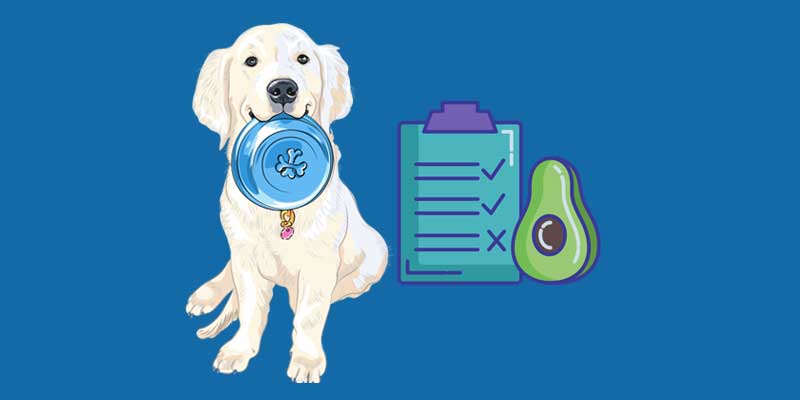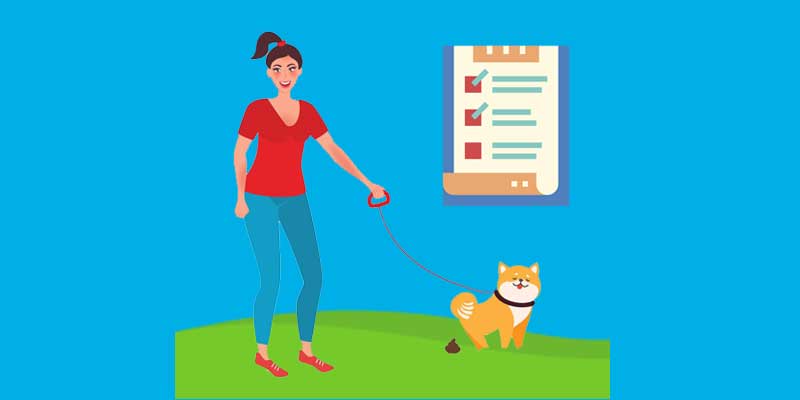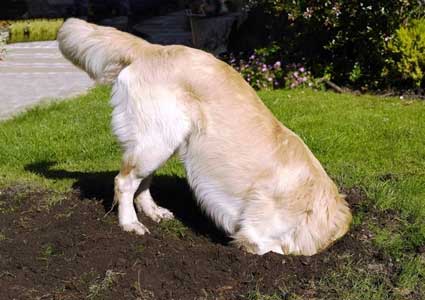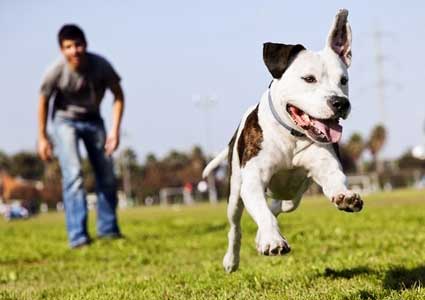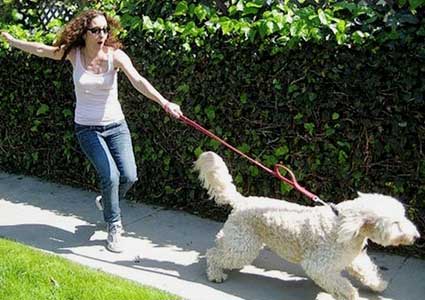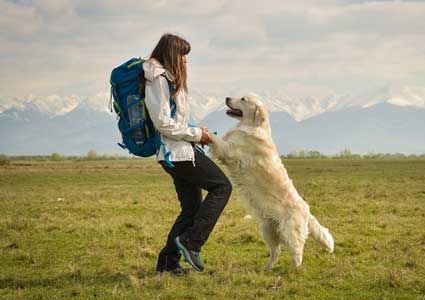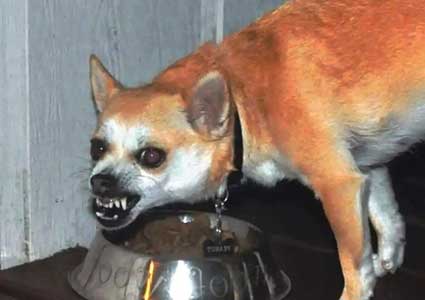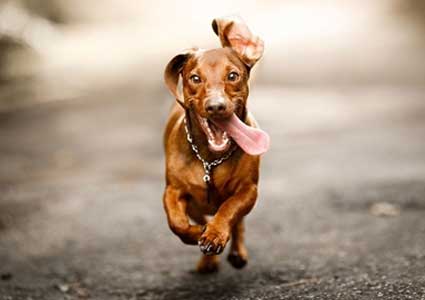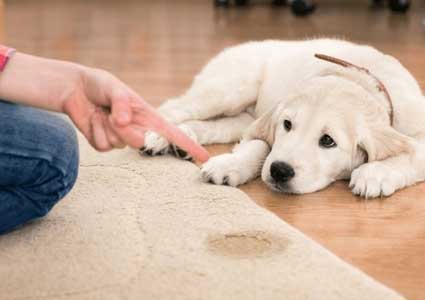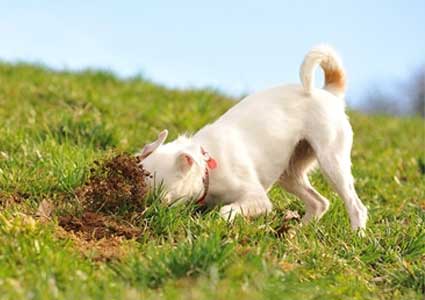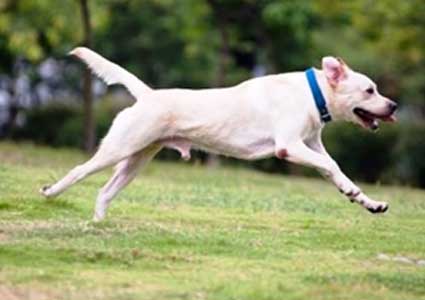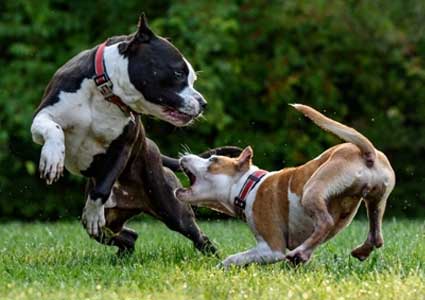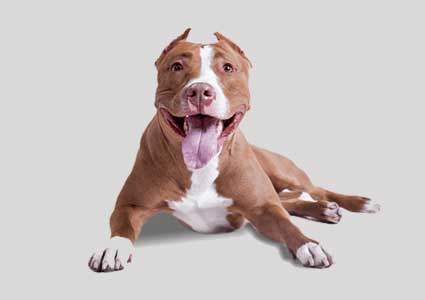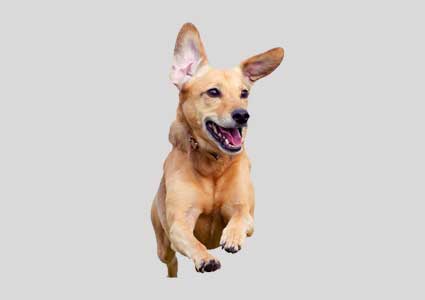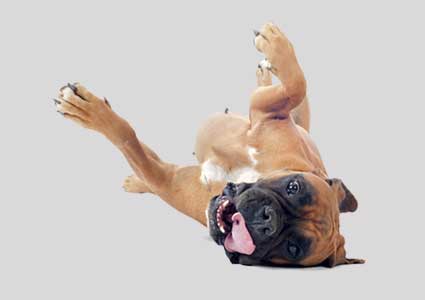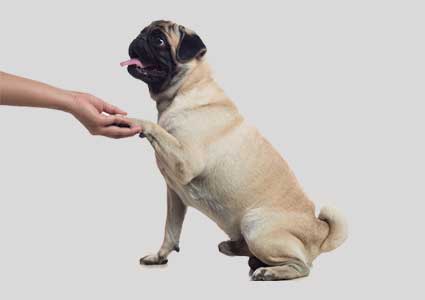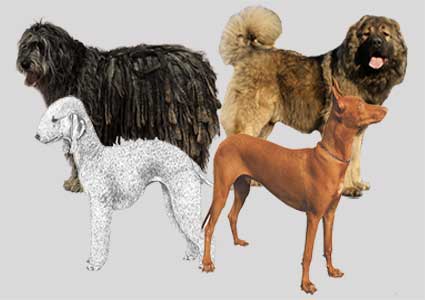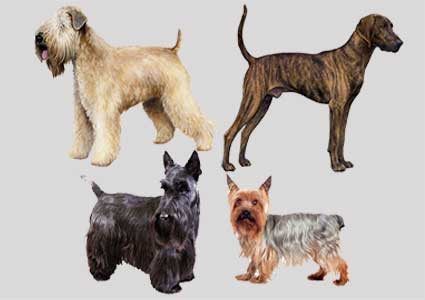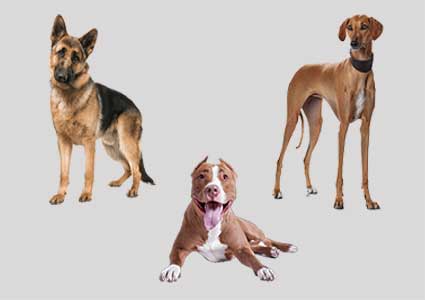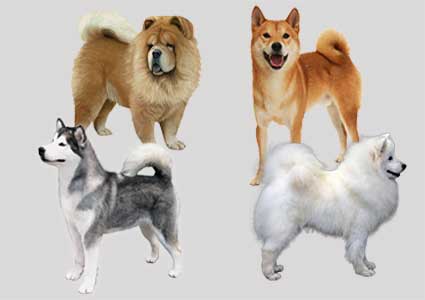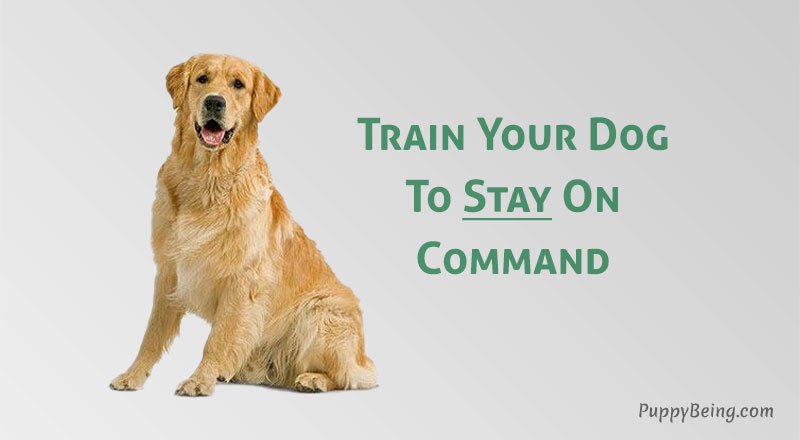
You can teach a dog to stay on command with the correct training process. Learning to stay can be challenging for many dogs. Training this behavior will take patience and consistent practice.
The Stay command teaches your dog to remain still wherever you place him until you issue the release command. This can be a handy tool for managing your dog’s unwanted actions. It can keep your pooch from jumping on guests.
A dog that can stay put on cue is much easier to manage in a chaotic outdoor environment. When you are in a busy situation outdoors, putting your pup into “stay” will help you focus on the task at hand without having to worry about your dog doing any kind of mischief.
Trick Difficulty: Intermediate
Training Requirements: A clicker, a training room with no distractions, a bag of your dog’s favorite treats
How To Teach A Dog To Stay on Command
You should teach the stay command only after you have successfully taught your dog the “sit” and “down” commands. These commands work together and will make the training process lot simpler.
It is recommended to first teach your dog to stay in the sitting position. Once he has learned it correctly, transition the training to stay in the lying down position.
Here are the exact steps to train your puppy to stay on cue.
Steps To Train Your Dog To Stay
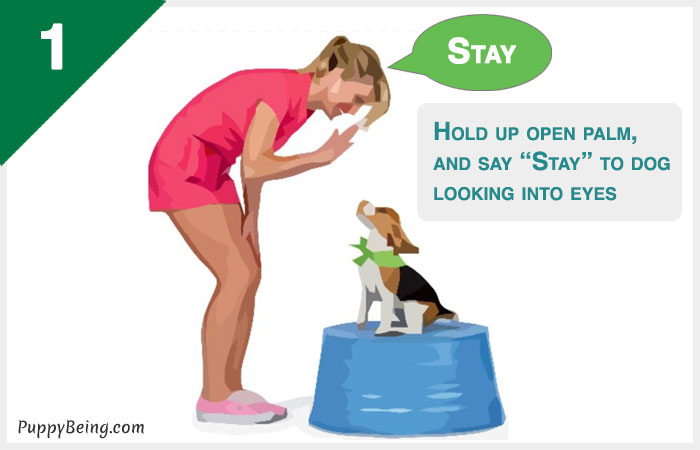
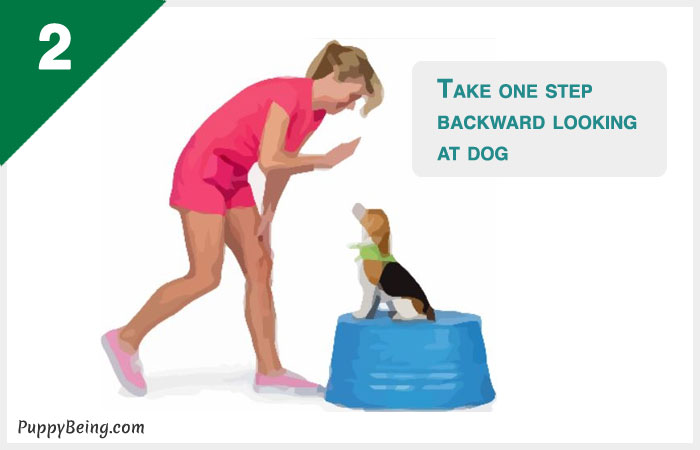
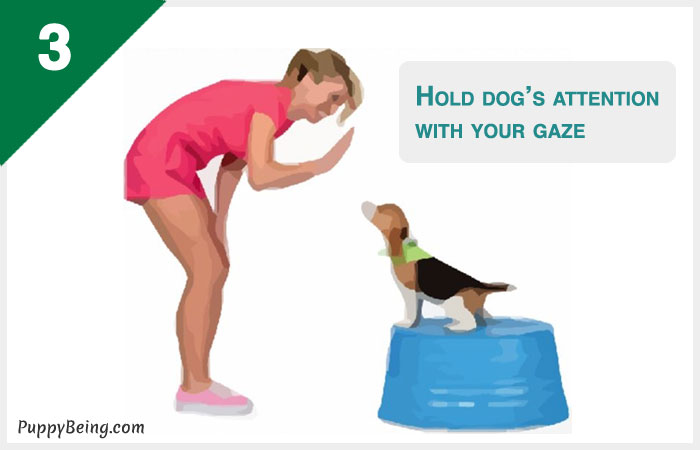
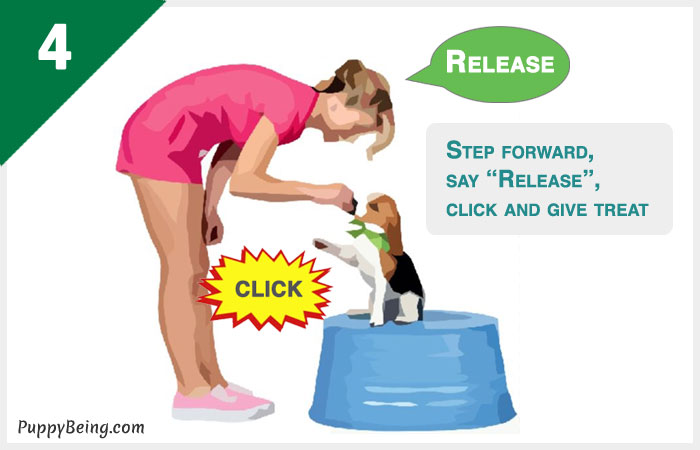
- Take your dog to your designated training room and put him in a seated position with the “sit” command.
- Stand very close to your dog, facing him, and place your open palm in front of his nose. Say “stay” in a clear and friendly voice.
- Keep your open hand up in the air and take one step backward while looking directly at your dog’s face to keep him focused.
- Wait for a second and then step forward. Say “release,” click your clicker, praise your dog and give him a treat. Only praise and treat when your dog is sitting and not after he has gotten up.
- If your dog moves before your issue the “release” command, put him back in the place where he was before you asked him to stay.
- Slowly increase the time you ask your dog to stay and increase the distance between you and him.
- Always go to your dog to give him the treat, don’t let him break the stay and come to you to get the treat. Only reward the dog after you have said the “release” command and clicked.
- As the training progresses to longer wait times and distances, if your dog starts breaking the stay position at some particular wait time or distance, then go back to training at the distance and time he could successfully stay earlier.
- Once your pup can follow the “stay” command for at least 10 seconds with you at a distance of five steps away from him, then you can start varying the routine. Instead of stepping backward while facing your dog, turn around and walk away from him. If he starts following you, then reduce the distance down to fewer steps and try again.
- After your dog has learned to stay even when you walk away with your back towards him, then you can progress the training to the next level. Put your dog in “stay,” walk away, then walk back to him, then walk away again without releasing him.
- Keep varying the release pattern randomly. Sometimes release him on your first return, sometimes on your second return. Always reward and praise your dog for each successful stay.
- Increase the training challenge by creating distractions for your dog. After you walk away, wave your hand, jump up and down, or play with a toy as you wait. Your dog should still patiently remain in the stay position.
- As soon as your dog has mastered this level of practice, it is time to now go completely out of your dog’s sight. Put your dog into stay and walk away until he can no longer see you. Wait a few seconds before you return and release him. Gradually increase the time before you return.
- Now it is time to take the training outdoors. Put your dog on a leash and practice the stay command outdoors in an area with lots of distractions. Keep the distance and wait time of the stay short at first and gradually increase them as your dog displays successful stays.
- After your dog has mastered the “stay” outdoors with a leash. You can start practicing outdoors without the leash. Make sure to first practice in a safe space where your dog can’t get hurt even if he gets distracted and runs off temporarily.
- Eventually, wean your dog off the treats by replacing them with petting and praises every time he obeys the stay command.
Sit and Stay Puppy Training Tips, Problems, and Solutions
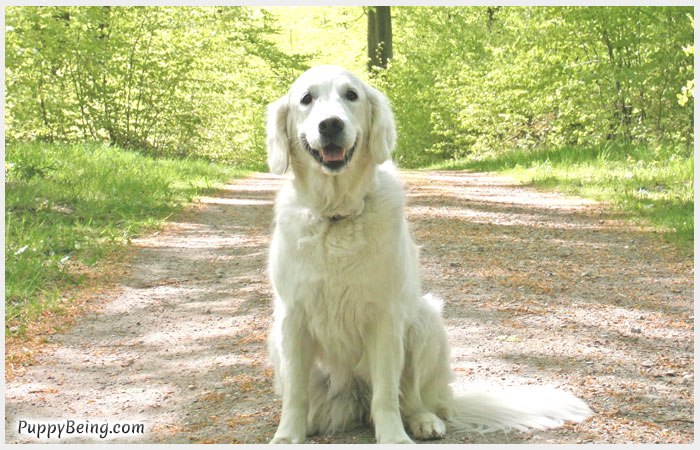
If you are training a young puppy, he may not stay for long durations because he has little self-control at that age. As your pup matures, he will be able to stay for longer durations.
Keep silent as much as possible during the training. Don’t say any words other than the mentioned commands. Talking with your dog will stimulate him to move, and we want him to stay inactive.
Don’t ask your dog to stay with the treat visible in your hand. This will only tempt your dog to come after you. Keep the treat hidden and only bring it out just before you feed him.
If you feel your dog is just about to break position and move out of the stay, then look directly into his eyes and repeat the “stay” command in a firm voice.
Always walk back to your dog before you release him and then feed the treat. Don’t toss the treat from afar or release him from afar. This can confuse him.
At the initial stage of the training process, only move away from your dog slowly. If you hurry away, your dog may spring into action. Once your dog has exhibited successful stays for short durations, then you can start moving away from him at a faster pace.
If your puppy comes out of stay just a few seconds before you release him, then you may be bringing out the treat too quickly. Don’t show him the treat until after you have clicked and issued the release command.
After your dog has learned to stay in the sitting position for at least 10 seconds, you can start training with him in the lying down position.
If your dog is unable to stay even after repeated practice, then consider these points.
Is the training area totally free of distractions? Make sure there is nothing around that will grab your dog’s attention.
Is your dog tired? Limit training sessions to less than 10 minutes. Pick a time when your dog is always fresh and upbeat, like immediately after a nap.
Is your dog not interested in the treats? You might need a higher value reward to tempt your dog to stay.
Are you going too fast? If your dog was able to stay for short durations when you were near him but is unable to stay when you are farther away, then you may have progressed too fast. Go back to the distance/time your dog was comfortable with and proceed slowly.




